Savor the warmth of winter with this delightful Methi Paratha recipe! Made with whole wheat flour, fresh fenugreek leaves, and aromatic spices, these khasta (flaky) parathas are a perfect blend of taste and health.
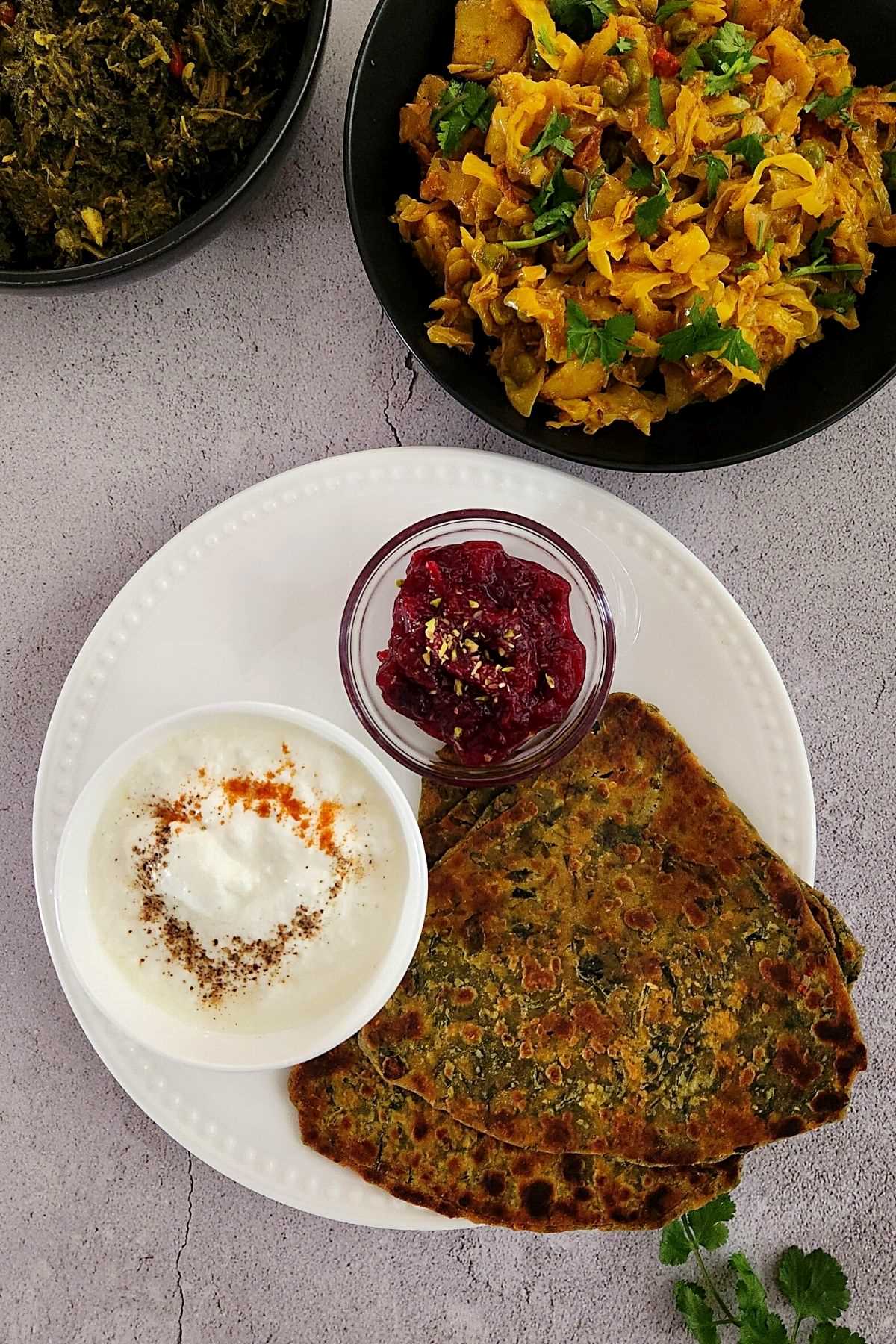
Every winter, my mom would make these delicious methi parathas that filled our home with a comforting aroma. The process was a cherished tradition, from kneading the dough to carefully rolling the parathas. The parathas, with their flaky texture, were a winter treat I looked forward to eagerly, savoring each bite with the warmth of home-cooked goodness.
I always marveled at how khasta, or flaky, these parathas turned out – a perfect blend of crispiness and the earthy flavors of fenugreek. The memories of those winter evenings, gathered around the dining table with the aroma of methi parathas in the air, remain etched in my mind as a symbol of comfort and love.
Jump to:
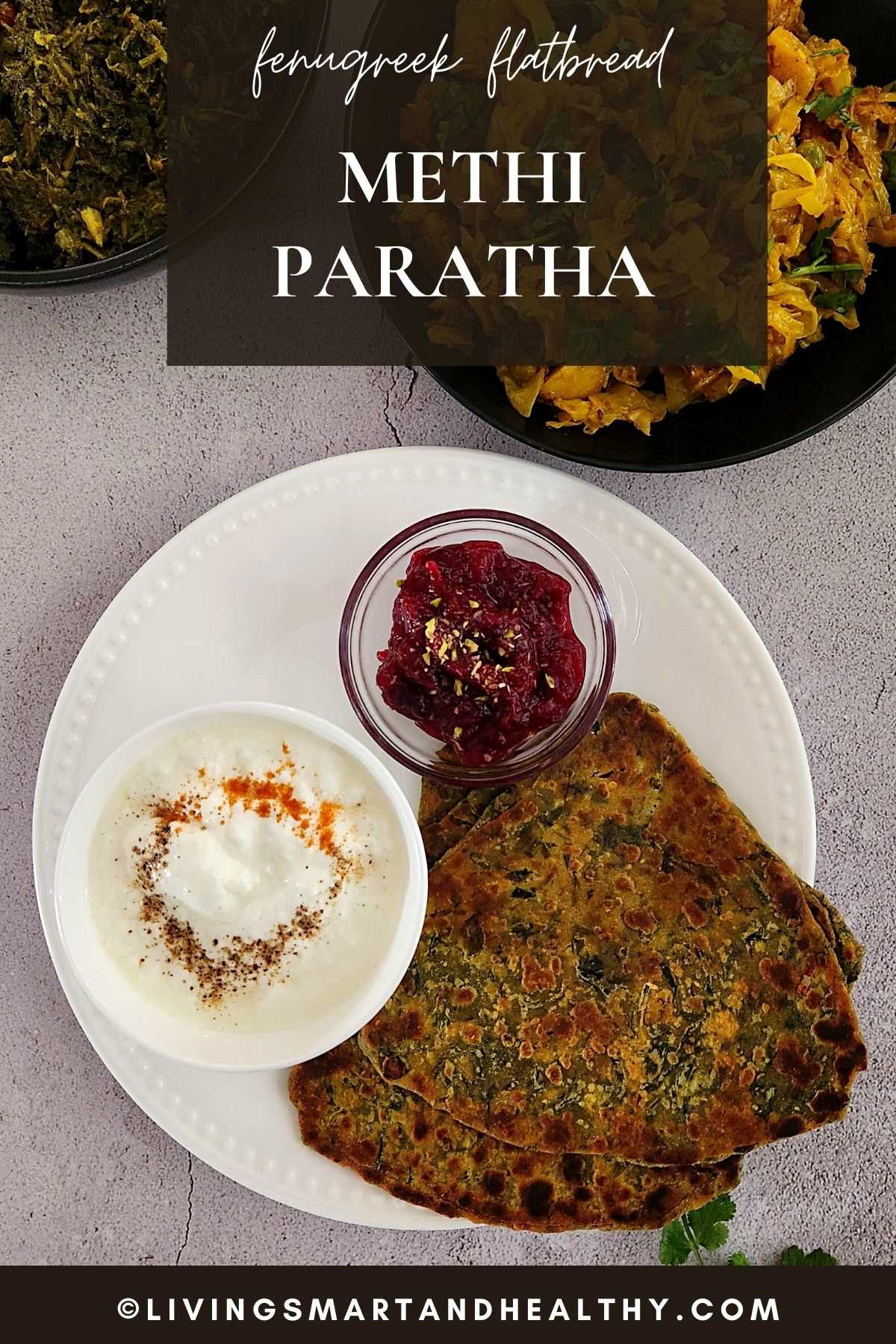
About Methi Paratha
Methi paratha is a popular Indian flatbread made by incorporating fresh fenugreek leaves (methi) into a whole wheat flour dough, along with spices. The dough is rolled out, cooked on a griddle or tawa with ghee or oil, resulting in a flavorful and flaky bread that is often served with yogurt, pickles, or other side dishes.
Methi paratha not only offers a delightful taste but also provides nutritional benefits from the fenugreek leaves, which are known for their distinct flavor and potential health-promoting properties.
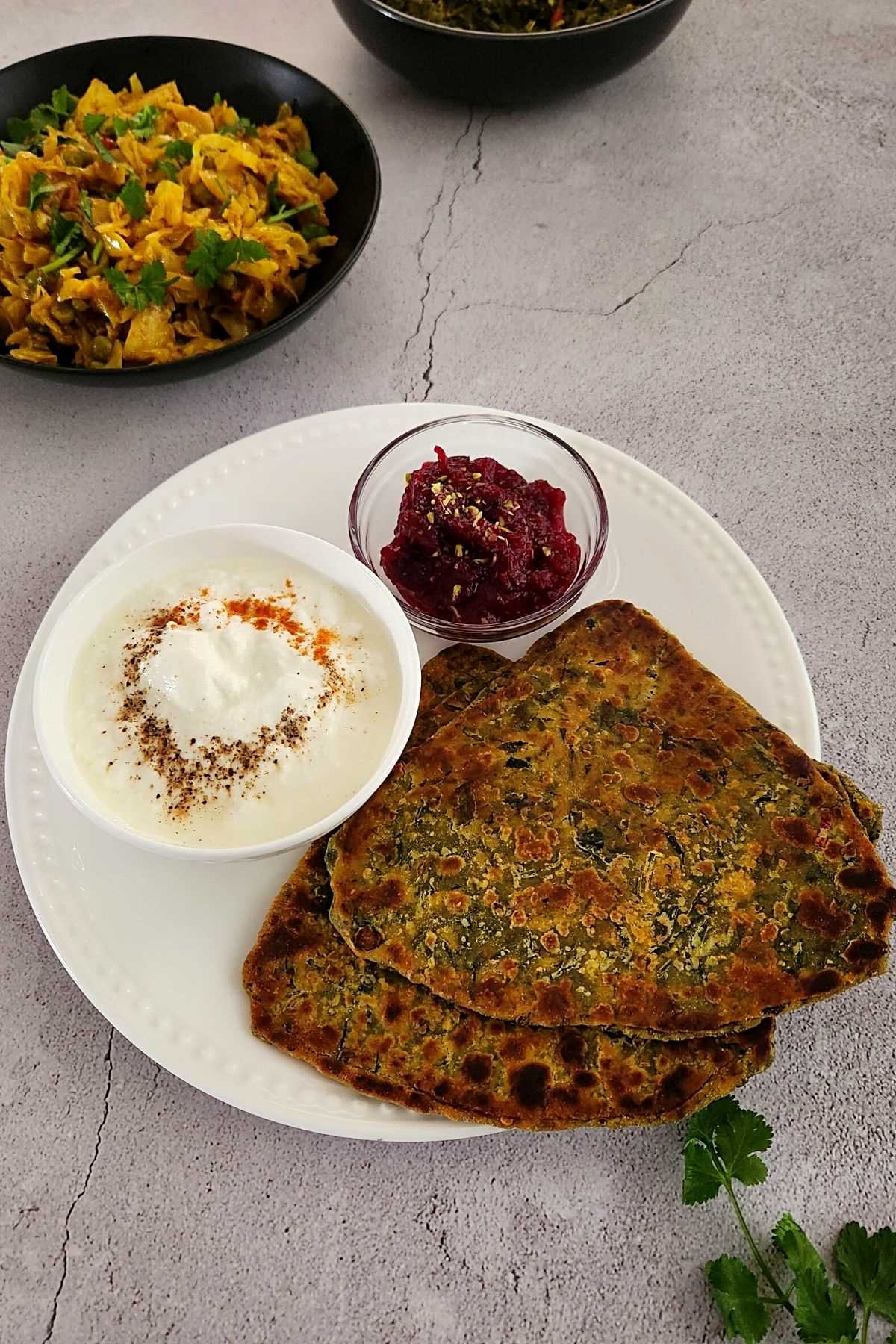
Ingredients For Methi Paratha
Here's a brief description of the main ingredients used in Methi Paratha Recipe:
- Whole Wheat Flour (Atta): A nutritious flour made from whole wheat grains, providing fiber, vitamins, and minerals.
- Fenugreek Leaves (Methi): Fresh fenugreek leaves contribute a distinct flavor and aroma to the paratha. Fenugreek is also known for its health benefits.
- Carom Seeds (Ajwain): These small seeds have a pungent taste and aid in digestion. They add a unique flavor to the paratha.
- Ginger: Ginger adds a warm, aromatic flavor to the Methi Paratha.
- Green Chili: Green chili imparts a mild to moderate heat to the paratha.
- Turmeric Powder: Apart from its vibrant color, turmeric adds a mild earthy flavor and has anti-inflammatory properties.
- Salt: Enhances the taste of the paratha.
- Water: Used to knead the dough and achieve the right consistency.
- Ghee or Oil: Used in the dough and for cooking the paratha, adding richness and flavor.
These ingredients come together to create a flavorful, flaky, and wholesome flatbread that can be enjoyed on its own or with various accompaniments.
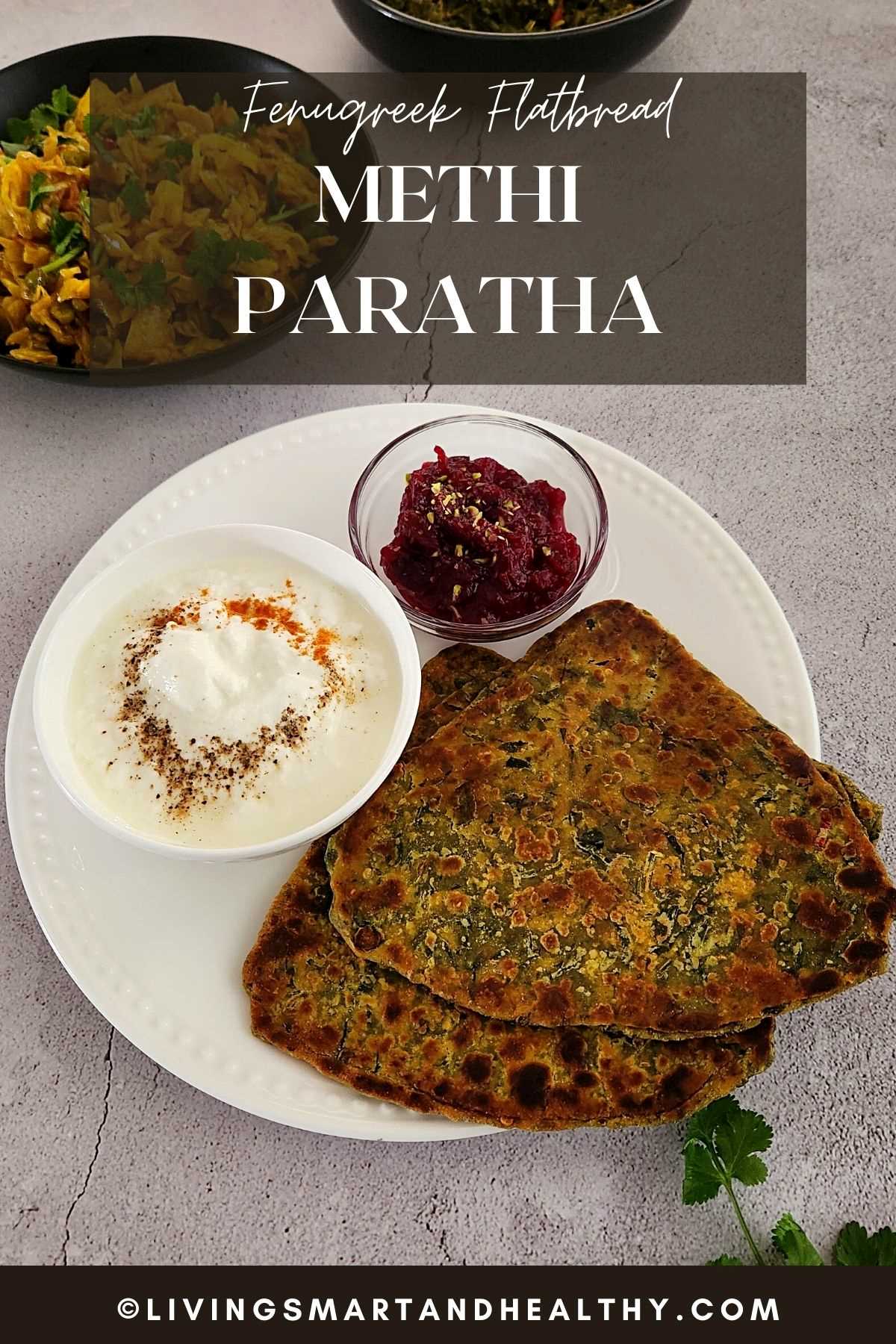
How to make Khasta Methi Paratha
Methi Paratha is a delicious and flaky Indian flatbread made with whole wheat flour, fenugreek leaves (methi), and spices. Here's a simple recipe for making Khasta Methi Paratha:
1. In a pan, heat ghee or oil and add cumin seeds, followed by chopped fenugreek leaves. Sauté until the fenugreek softens. Remove methi on a plate and allow it to cool down.
2. In a large mixing bowl, combine whole wheat flour, besan, fenugreek leaves, ajwain (carom seeds), crushed ginger and green chili paste, turmeric powder, red chili powder, coriander powder, yogurt or fresh cream, and salt to taste. Gradually add water and knead the mixture into a semi-soft and smooth dough. Let it rest for about 15-20 minutes.

3. Divide the dough into equal-sized portions and shape them into balls.
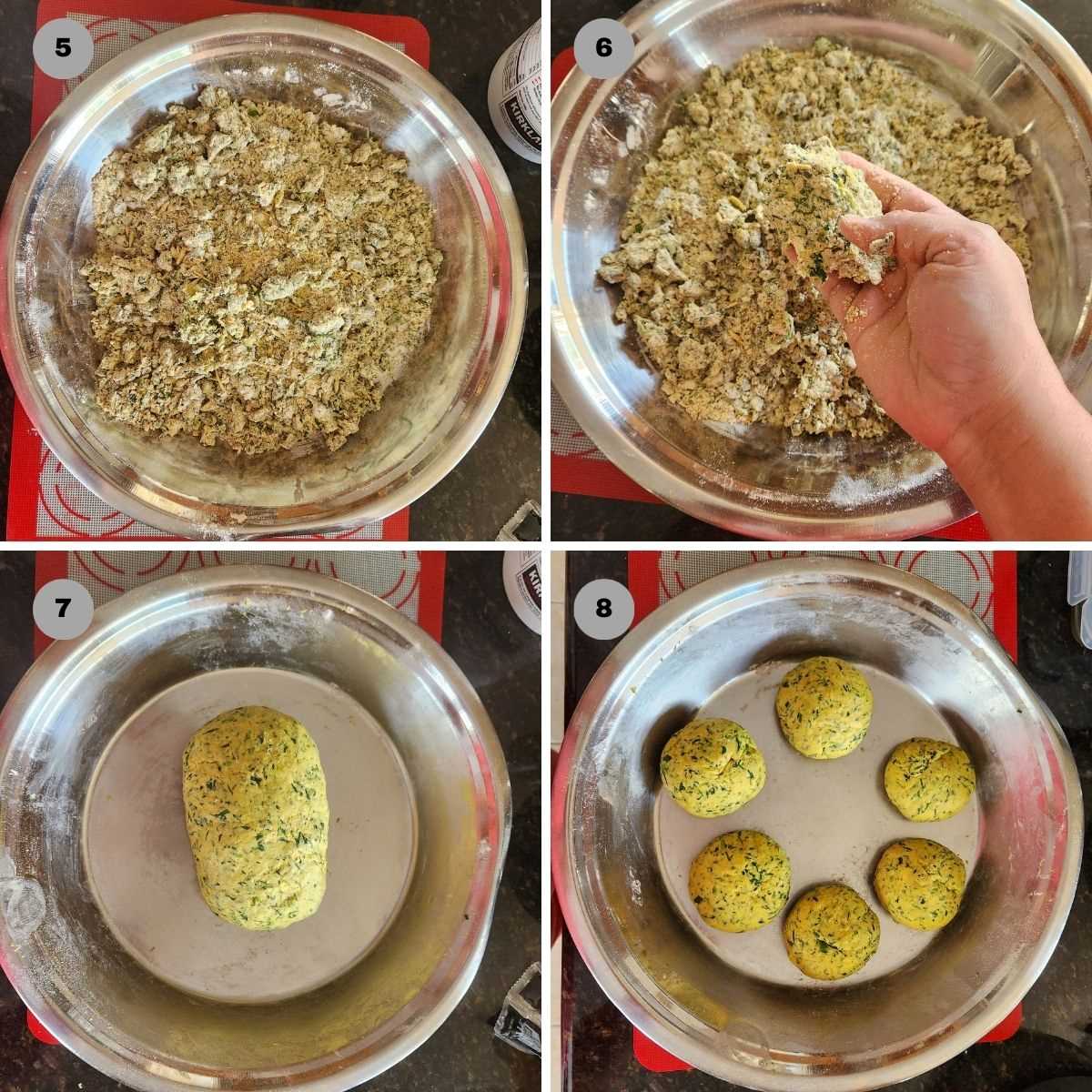
4. Take a dough ball, dip it into dry whole wheat flour, and roll it into a small circle using a rolling pin.
5. Apply a thin layer of ghee or oil on the rolled circle. Fold the circle into half to form a semi-circle. Apply ghee or oil again and fold it once more to form a triangle.
6. Roll the triangle gently into a slightly thicker paratha.
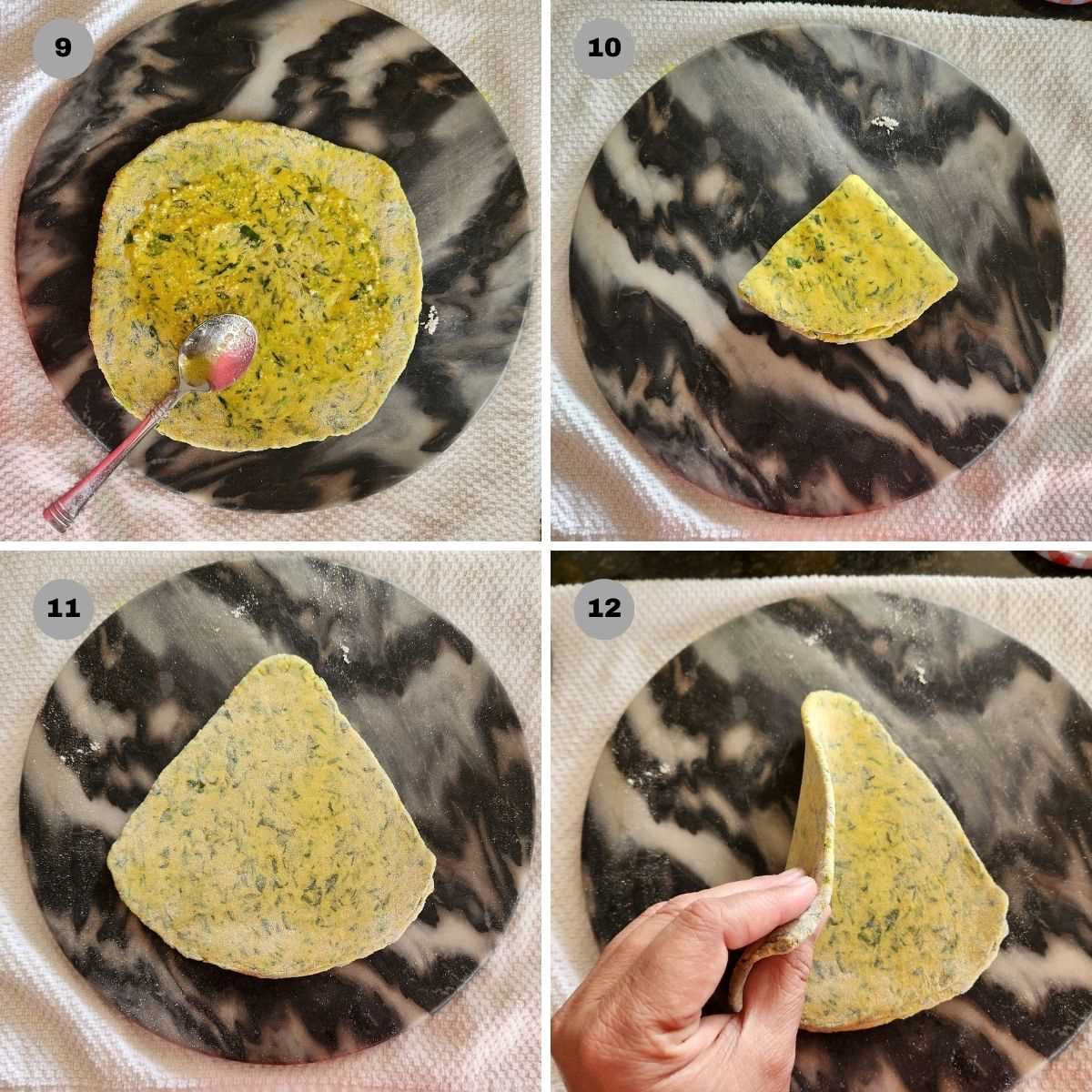
7. Heat a griddle or tawa on medium heat. Place the rolled paratha on the hot griddle. Cook until small bubbles appear on the surface, then flip the paratha.
8. Apply ghee or oil on the cooked side, then flip again and apply ghee or oil on the other side.
9. Continue cooking the paratha, pressing the edges with a spatula, until both sides are golden brown and crisp.
10. Remove from the griddle and repeat the process for the remaining dough balls.
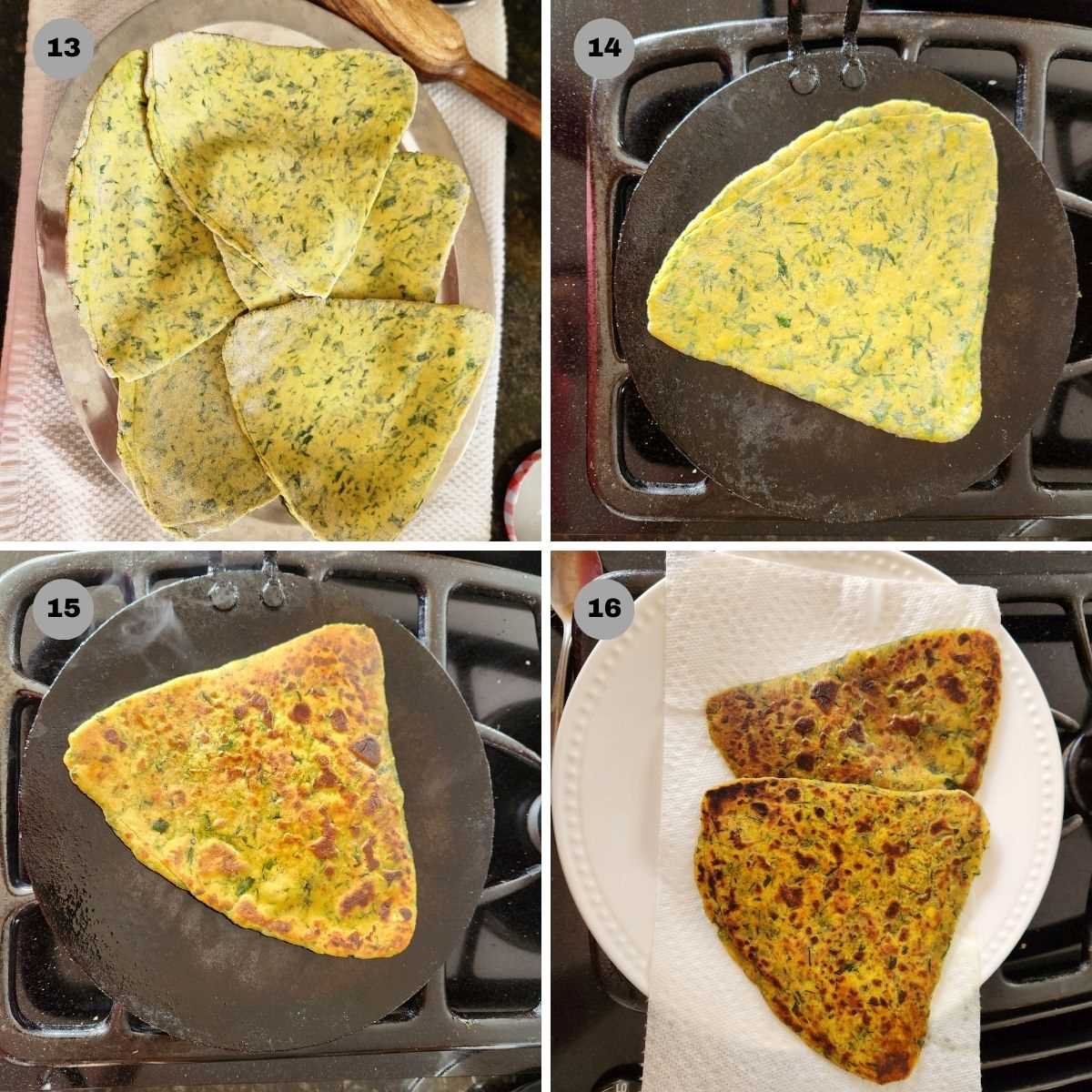
11. Serve hot Khasta Methi Parathas with yogurt, pickle, Shrikhand, or any side of your choice.
Enjoy your delicious and flaky Khasta Methi Parathas!
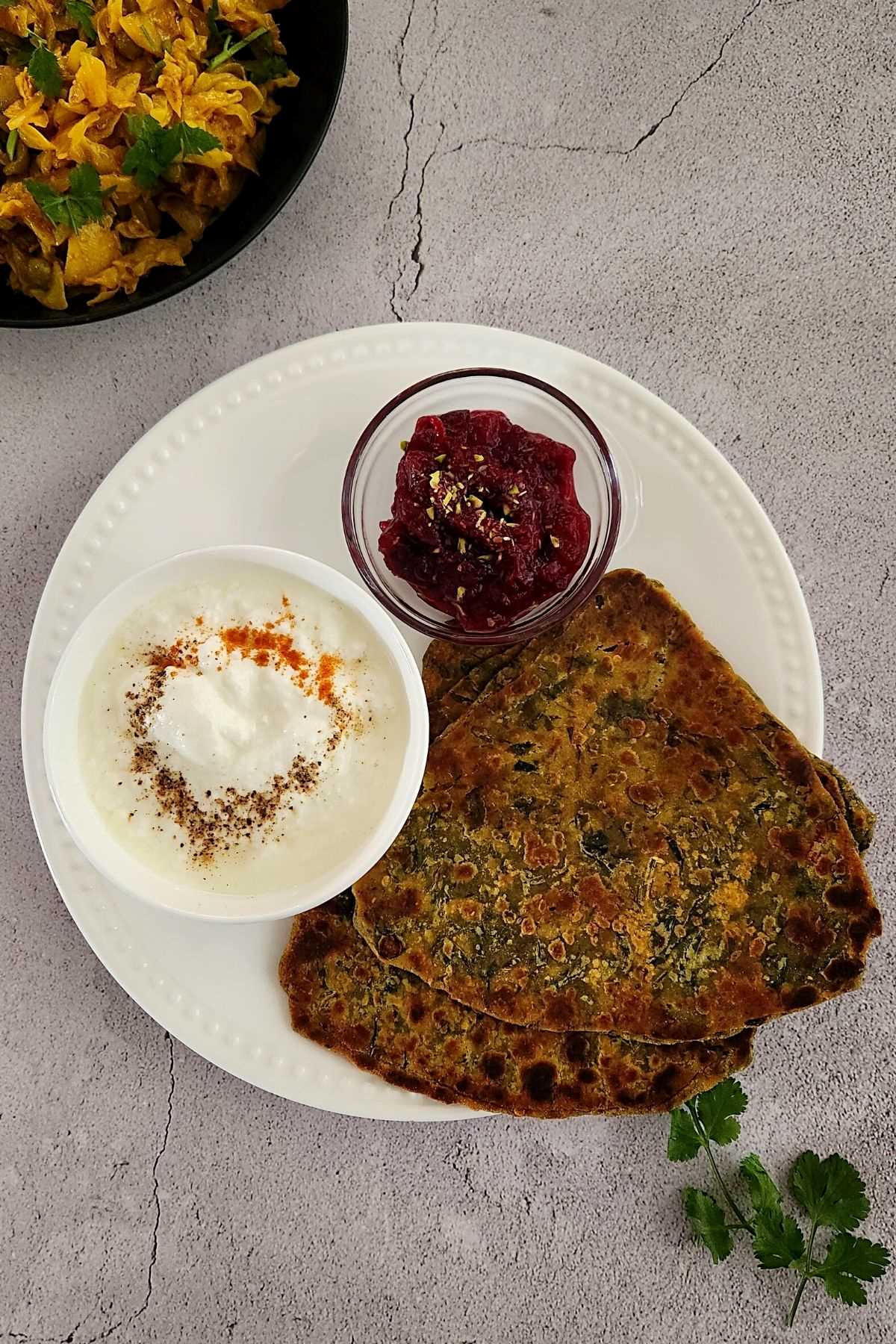
Storage
To store methi parathas, allow them to cool completely, then stack them. Place the stacked parathas in an airtight container or wrap them in foil and refrigerate for up to 2-3 days, or freeze for longer storage, ensuring they are well-sealed to maintain freshness.
Tips For Khasta Methi Paratha
Here are some tips to help you make perfect Khasta Methi Parathas:
- Fresh Ingredients: Use fresh fenugreek leaves for the best flavor. Ensure that your whole wheat flour and other ingredients are also fresh.
- Kneading the Dough: Knead the dough well to make it soft and smooth. Let it rest for at least 15-20 minutes to allow the gluten to relax, making it easier to roll out the parathas.
- Rolling Technique: When rolling out the parathas, dust the rolling surface and the dough ball with whole wheat flour to prevent sticking. Roll the parathas evenly to achieve a consistent thickness.
- Layering with Ghee or Oil: Applying ghee or oil between the layers while rolling and folding helps create the flaky texture. It also adds a rich flavor to the parathas.
- Adjusting Consistency: If the dough is too dry, add a little more water. If it's too sticky, add a bit more flour. The dough should be soft and pliable.
- Cooking Temperature: Preheat the griddle or tawa properly before cooking the parathas. Cooking on a medium flame helps in even cooking and achieving a golden-brown color.
- Pressing with a Spatula: Press the edges of the paratha with a spatula while cooking to ensure even cooking and to make it flaky.
- Ghee or Oil for Cooking: Brushing ghee or oil on both sides of the paratha while cooking enhances the flavor and gives a nice crispiness to the outer layer.
- Serve Hot: Parathas are best enjoyed when served hot. Serve them with yogurt, pickle, or any side dish of your choice.

Frequently Asked Questions
Yes, methi paratha can be a healthy choice as it incorporates whole wheat flour and fenugreek leaves, which are rich in fiber, vitamins, and minerals. The fenugreek leaves also offer various health benefits, including potential blood sugar regulation and improved digestion.
The best side dish for methi paratha is often plain yogurt or raita, as the cool and creamy consistency complements the warmth and spiciness of the paratha. Additionally, pickles or chutneys can add a burst of flavor that pairs well with the fenugreek-infused taste of the paratha.
Methi paratha is a type of Indian flatbread made with whole wheat flour, fenugreek leaves, and spices, resulting in a flaky and flavorful texture. In contrast, roti is a plain whole wheat flatbread without added ingredients, typically softer and thinner than paratha.
The calorie content of one methi paratha can vary based on the size, ingredients, and cooking method, but on average, a medium-sized methi paratha may contain around 150 to 200 calories. However, specific calorie counts can be affected by factors like the amount of oil or ghee used during cooking.
More Paratha Recipes
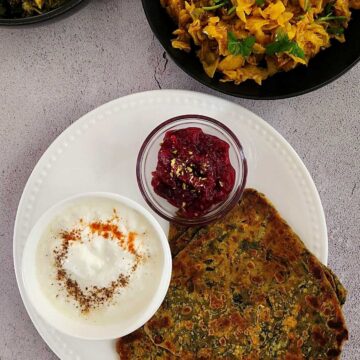
Khasta Methi Paratha Recipe | Winter Special Recipe
Equipment
Ingredients
- 1 large bunch fresh methi Fenugreek, (about 4 cups methi leaves)
- 1 teaspoon Ghee or oil; For vegan use oil
- ½ teaspoon jeera Cumin Seeds
- 2 cup atta whole wheat flour
- 4 tablespoon besan Gram flour
- ½ teaspoon ajwain Carom Seeds
- 1 inch Ginger crushed or grated
- 2-3 Green chili crushed or chopped; adjust to taste
- 1 small onion chopped (optional)
- handful of fresh cilantro chopped
- ½ teaspoon Turmeric powder
- 1 teaspoon Red Chili Powder ; adjust to taste
- 2 teaspoon Coriander Powder
- ¼ teaspoon garam masala optional
- 2 tablespoon yogurt or fresh cream
- Salt to taste
- ghee or oil as needed to make paratha
Instructions
- (Optional): Sprinkle some salt on the methi leaves, and mix gently. Let it rest for about 10 minutes, after 10 minutes, gently squeeze any extra moisture from the leaves, and use it in the recipe. This process helps remove any bitterness from the methi leaves.
- In a pan, heat ghee or oil and add cumin seeds, followed by chopped fenugreek leaves. Sauté until the fenugreek softens. Remove methi on a plate and allow it to cool down.
- In a large mixing bowl, combine whole wheat flour, besan, fenugreek leaves, onion (optional), ajwain (carom seeds), crushed ginger and green chili paste, turmeric powder, red chili powder, coriander powder, garam masala (optional), yogurt or fresh cream, and salt to taste. Gradually add water and knead the mixture into a semi-soft and smooth dough. Let it rest for about 15-20 minutes.
- Divide the dough into equal-sized portions and shape them into balls.
- Take a dough ball, dip it into dry whole wheat flour, and roll it into a small circle using a rolling pin.
- Apply a thin layer of ghee or oil on the rolled circle. Fold the circle into half to form a semi-circle. Apply ghee or oil again and fold it once more to form a triangle.
- Roll the triangle gently into a slightly thicker paratha.
- Heat a griddle or tawa on medium heat. Place the rolled paratha on the hot griddle. Cook until small bubbles appear on the surface, then flip the paratha.
- Apply ghee or oil on the cooked side, then flip again and apply ghee or oil on the other side.
- Continue cooking the paratha, pressing the edges with a spatula, until both sides are golden brown and crisp.
- Remove from the griddle and repeat the process for the remaining dough balls.
- Serve hot Khasta Methi Parathas with yogurt, pickle, Shrikhand, or any side of your choice.
- Enjoy your delicious and flaky Khasta Methi Parathas!
Notes
- Tips For Khasta Methi Paratha
- Frequently Asked Questions
Nutrition
Disclaimer
Nutrition values are my best estimates. If you rely on them for your diet, use your preferred nutrition calculator.

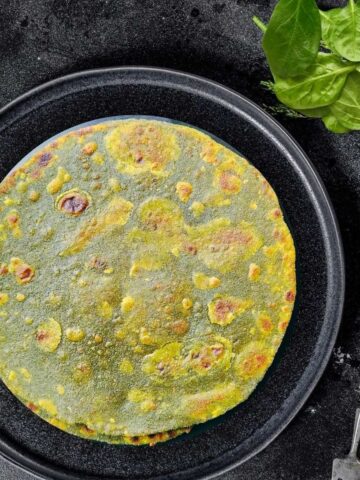
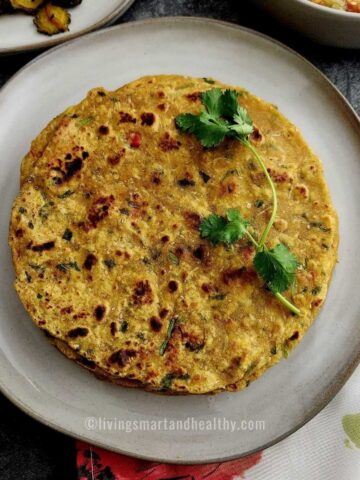
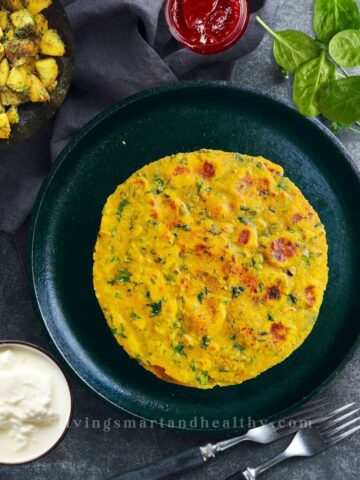
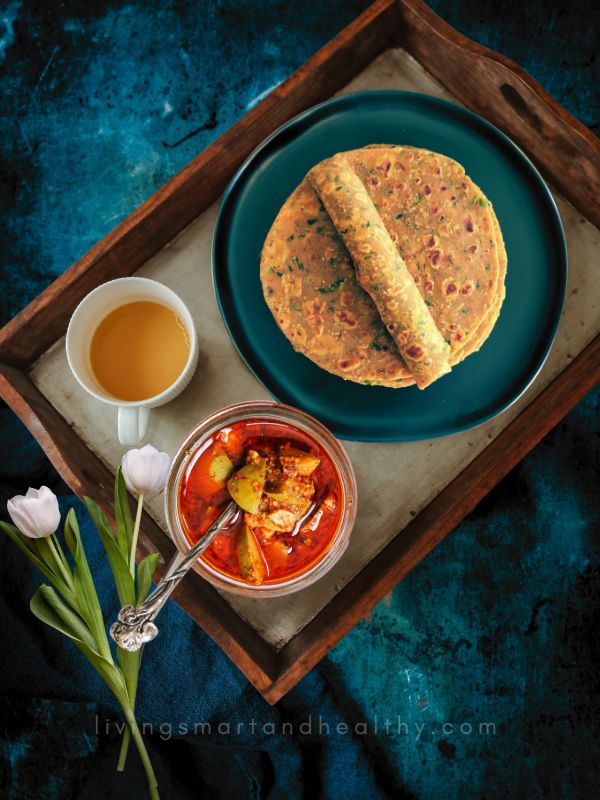
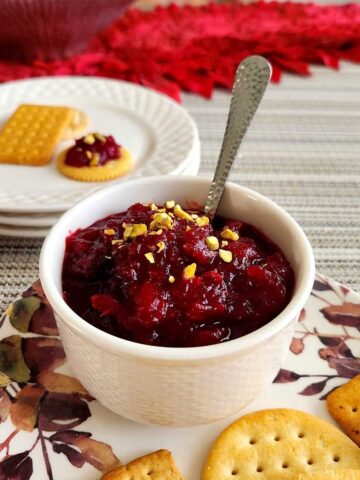
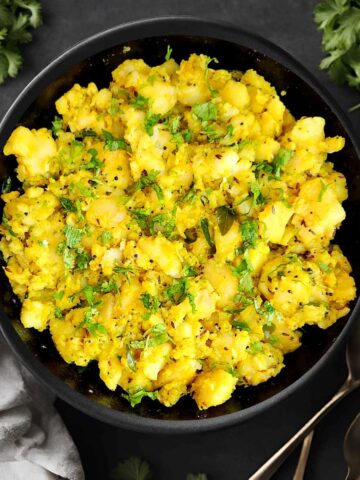
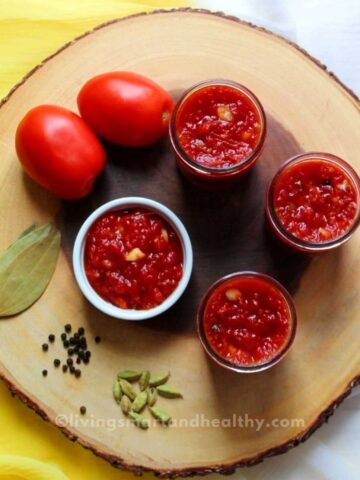
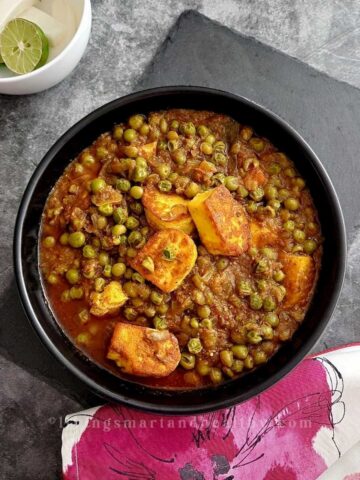
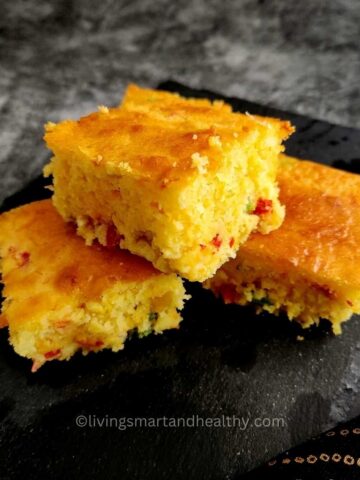
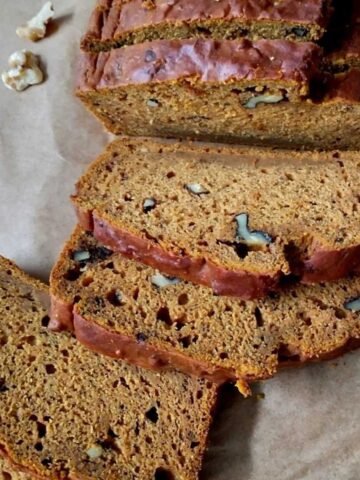
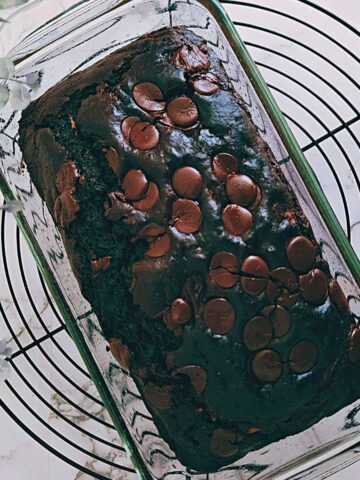
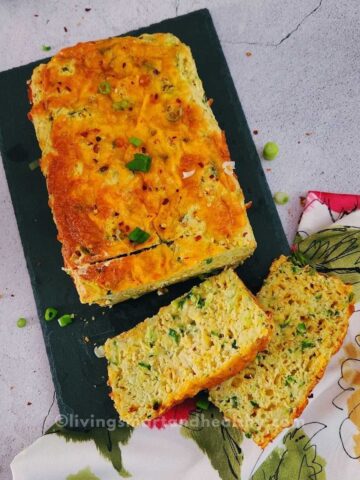
Leave a Reply
You must be logged in to post a comment.